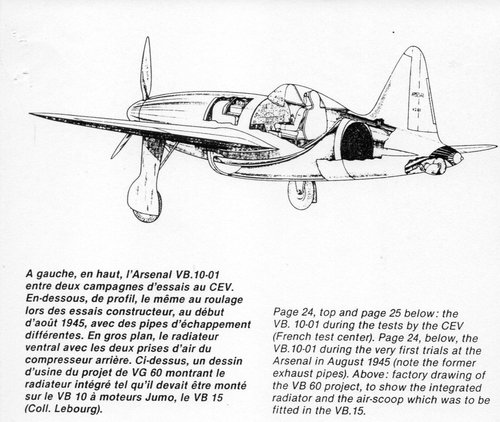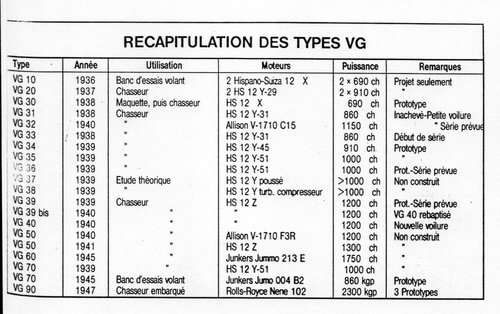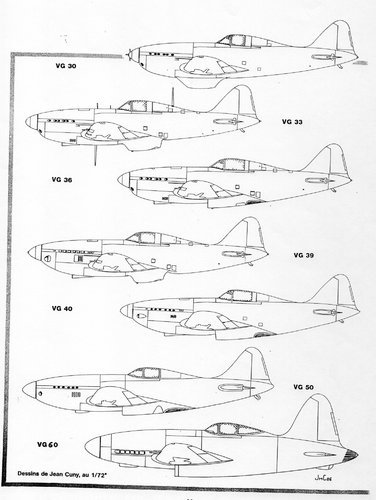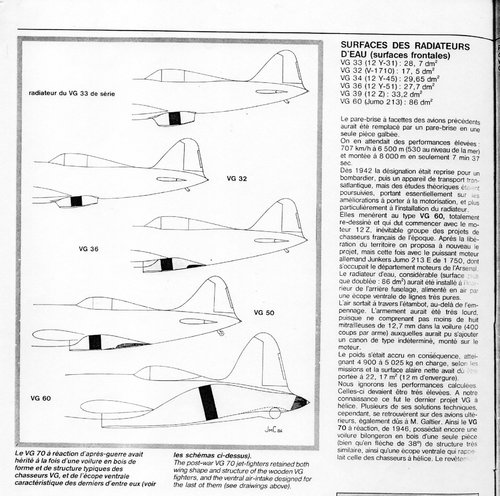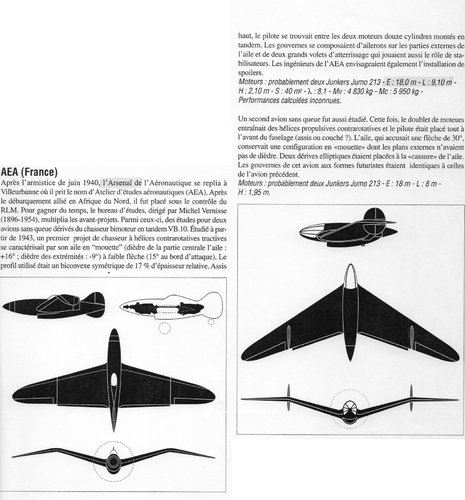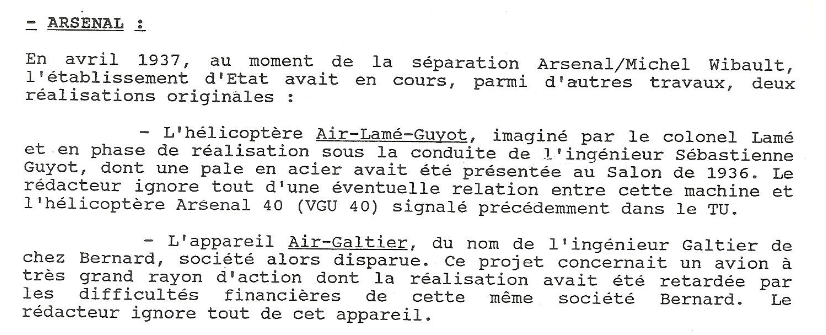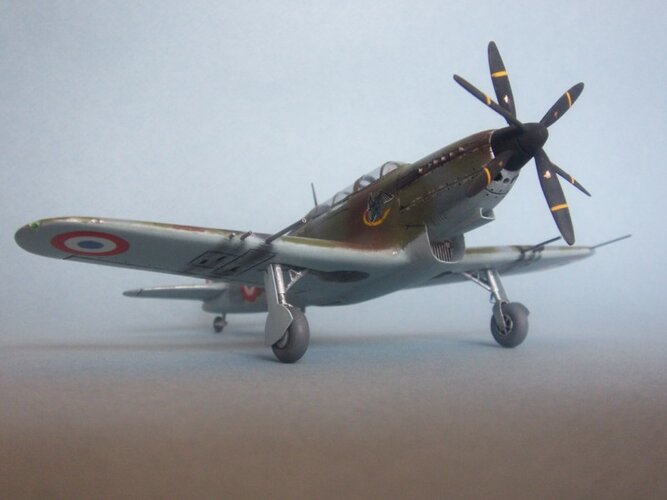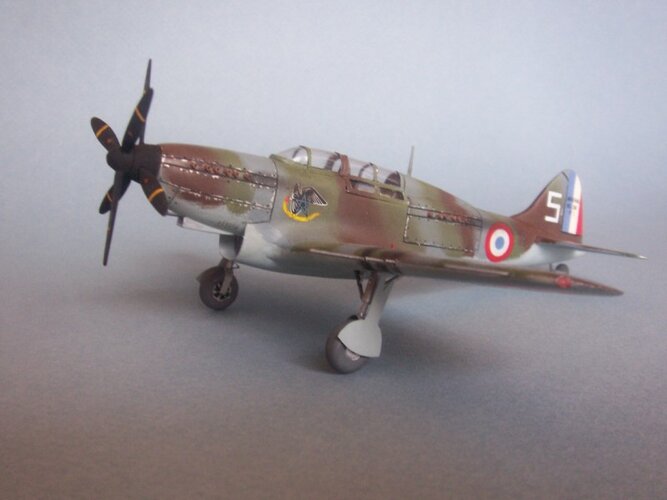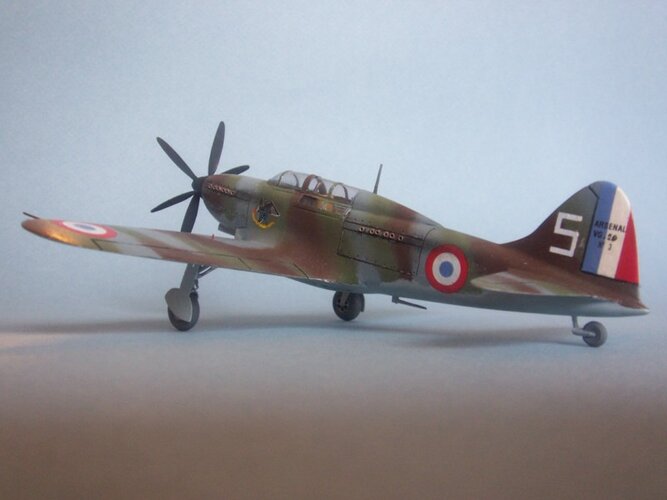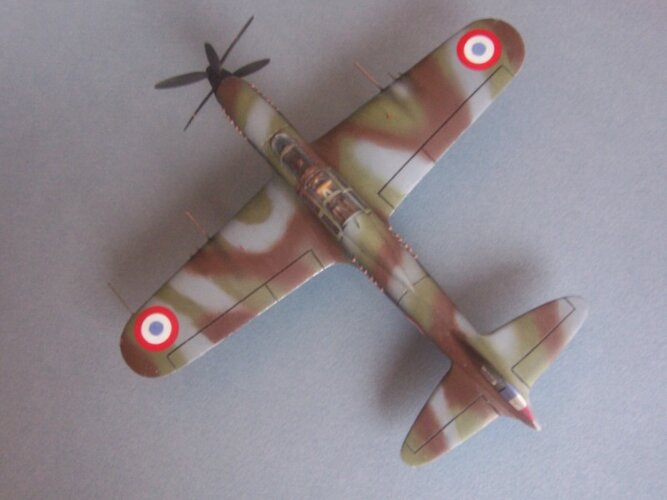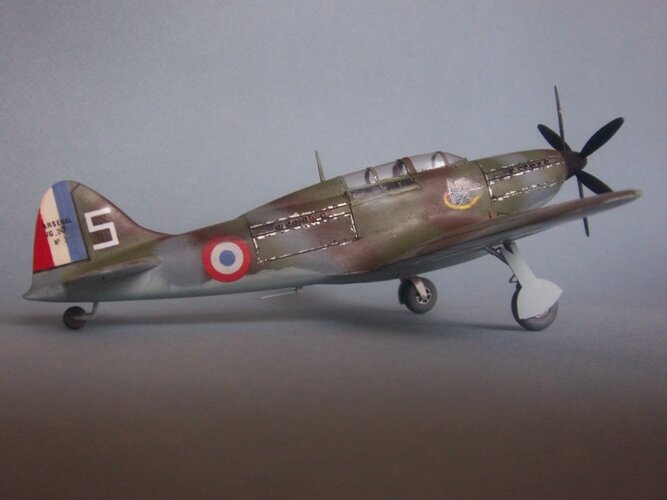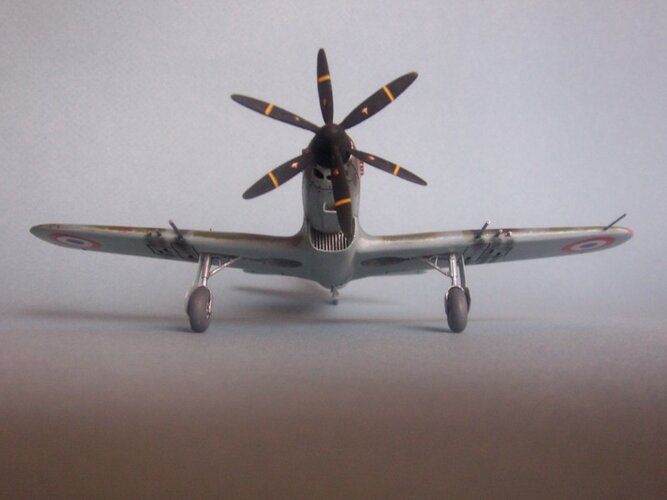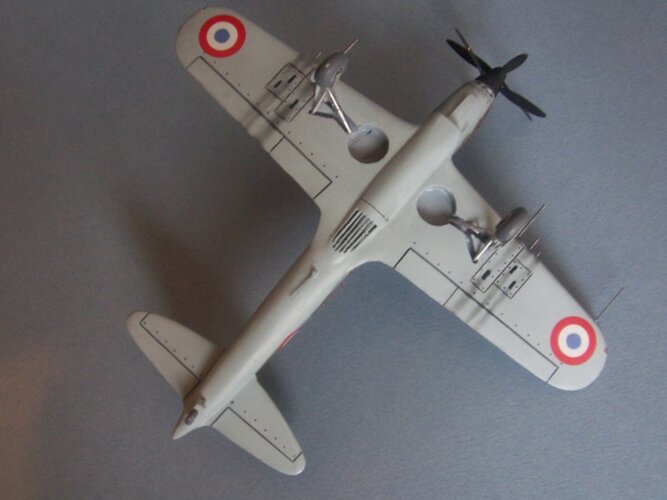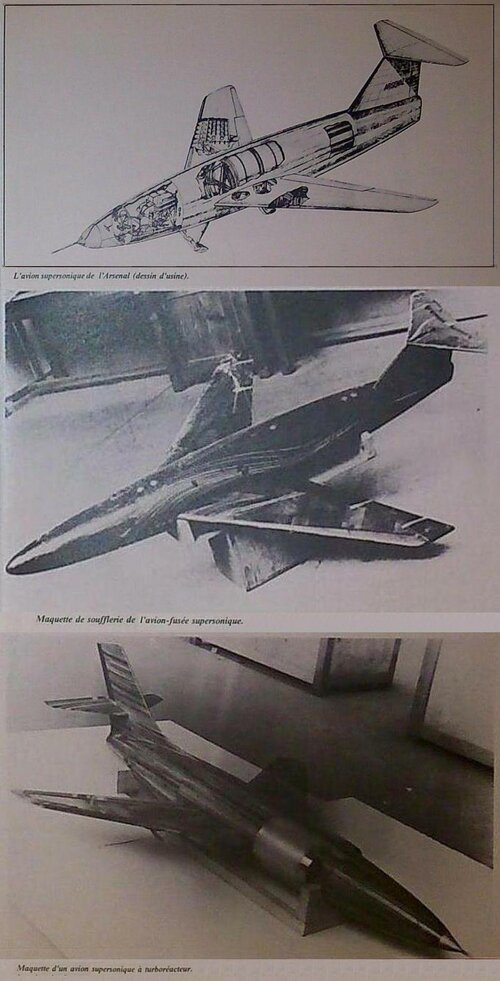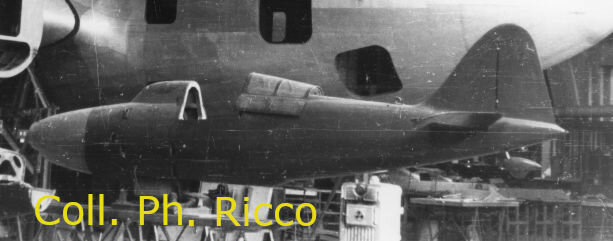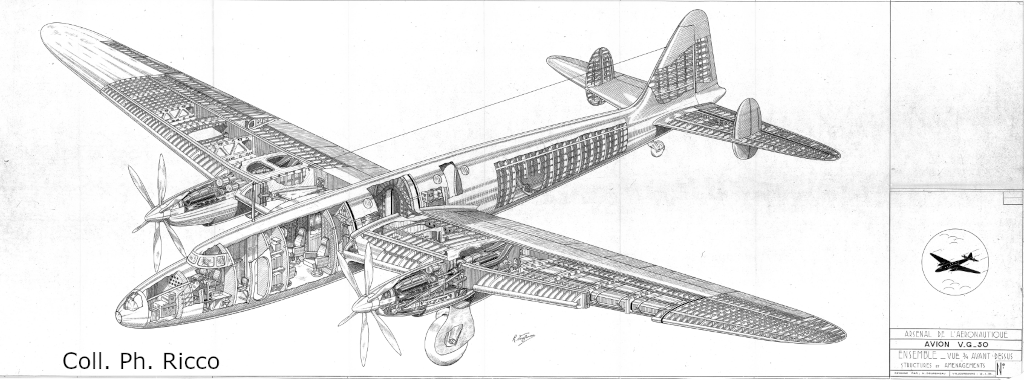You are using an out of date browser. It may not display this or other websites correctly.
You should upgrade or use an alternative browser.
You should upgrade or use an alternative browser.
Arsenal de l'aéronautique: built prototypes and unbuilt projects
Please see also some flying wings designs at Le Fana Nº 246 (Arsenal VB-10 monographie) and Hesham post Dec 22, 2015 here.
- Joined
- 26 May 2006
- Messages
- 33,449
- Reaction score
- 13,474
The Arsenal VG. 60 is one of my all time favorite French projects.
Hi Airborne,
but the designation VG.61 & VG.64,are they real one or fake ?.
- Joined
- 25 July 2007
- Messages
- 4,146
- Reaction score
- 3,788
... but the designation VG.61 & VG.64,are they real one or fake ?.
Yes, that's what Airborne2001 was asking. On his 'VG 60/VG 64 Revenant (Ghost)' link, you will find a host of fictional VG 60 variants listed - a bubble-canopied VG 60 (HS 12Z), VG 61A (produced by someone other than Arsenal), VG 61H (with HS 12Z-55), VG 61N (presumably Navale with unspecified armament changes), and VG 64 ("Late 1941" with an unnamed HS V-12 with "a Turbomeca supercharger").
Links in the specifications areas are to now-defunct WesWorld pages. I think that should be enough to confirm that these designations are what-ifs. (Perhaps Hood could confirm?)
Still, the Arsenal confusion continues ... On Justo's Le Fana table (676.jpg), the VG 60 is listed only as a 'Jummo 213E' (sic) powered 1945 project. It is the 1939 version of the VG 70 that is listed with an HS 12Y-51. However, in the text (678.jpg) is says: "Elles menèrent au type VG 60, totalement re-dessiné et qui dut commencer avec le moteur 12Z, inévitable groupe des projets de chasseurs français de l'époque."
That bit about 'like all French fighter projects of the time' seems abit overarching to me. With so much contradictory information on VG 60 development, nothing is irrefutable. It seems entirely plausible that, in 1939, Arsenal intended to power a prototype VG 60 with an HS 12Y-51 followed by production aircraft with HS 12Zs. Or, at least, that's the story I am sticking with ... until someone can show incontrovertibly that an HS 12Z was planned from the outset
Last edited:
charles
I really should change my personal text
- Joined
- 30 November 2015
- Messages
- 2
- Reaction score
- 1
Nick Sumner said:I don't know of any French inverted 'V' engines but Arsenal used Jumo 213s on the He 274 prototype. Was the VG70 a late war or post war design featuring the Jumo 213?
I note that the 'VG 70' sideview in Reply #41 looks very much like the VG 60 in Reply #42. Is it possible that the Le Fana author has conflated the two?
I have the VG 70 as a Jumo 004-powered VG 60 derivative (work beginning in September 1944). The VG 60 was, initially to have an 'upright' Hispano (first HS 12Y-51, then HS 12Z). However, the VG 60's post-war (1946?) incarnation was, indeed, to be powered by an inverted V-12 Arsenal 12H (Jumo 213E).
The Arsenal VG. 60 is one of my all time favorite French projects.
Now there is this website here which mentions some variants:

Our Forums are moving to Discord
forum.worldofwarplanes.com
However, I have never heard of any of these variants. Searches have brought up nothing. Are these real, or jest theoretical/fantasy developments?
The Arsenal VG. 60 is one of my all time favorite French projects.
Now there is this website here which mentions some variants:

Our Forums are moving to Discord
forum.worldofwarplanes.com
However, I have never heard of any of these variants. Searches have brought up nothing. Are these real, or jest theoretical/fantasy developments?
- Joined
- 26 May 2006
- Messages
- 33,449
- Reaction score
- 13,474
From TU 170,
In April 1937, when Arsenal / Michel Wibault separated,
the state establishment had in progress, among other works, two
original achievements:
- The Air-Lamé-Guvot helicopter, designed by Colonel Lamé
and in the construction phase under the supervision of engineer
Sébastienne Guyot, whose steel blade was presented at the 1936
Salon. editor is unaware of any possible relation between this
machine and the Arsenal 40 helicopter (VGU 40) previously
reported in the TU.
- The Air-Galtier aircraft, named after engineer Galtier from
at Bernard, a company then disappeared. This project involved
an airplane very large radius of action, the realization of which
had been delayed by the financial difficulties of this same company
Bernard. The editor ignores all of this device.
In April 1937, when Arsenal / Michel Wibault separated,
the state establishment had in progress, among other works, two
original achievements:
- The Air-Lamé-Guvot helicopter, designed by Colonel Lamé
and in the construction phase under the supervision of engineer
Sébastienne Guyot, whose steel blade was presented at the 1936
Salon. editor is unaware of any possible relation between this
machine and the Arsenal 40 helicopter (VGU 40) previously
reported in the TU.
- The Air-Galtier aircraft, named after engineer Galtier from
at Bernard, a company then disappeared. This project involved
an airplane very large radius of action, the realization of which
had been delayed by the financial difficulties of this same company
Bernard. The editor ignores all of this device.
Attachments
klem
I really should change my personal text
- Joined
- 7 March 2015
- Messages
- 696
- Reaction score
- 1,496
- Joined
- 15 February 2024
- Messages
- 344
- Reaction score
- 962
Hello,
I come back to VG-20: a big wind tunnel model (scale 1) was built and tested at Chalais-Meudon.
In 1940, the German troups captured this model in Arsenal Hangar at Villacoublay, with the huge Arsenal Air-Wibault 100 prototype under construction. I attach a photo of this model from my collection.
I come back to VG-20: a big wind tunnel model (scale 1) was built and tested at Chalais-Meudon.
In 1940, the German troups captured this model in Arsenal Hangar at Villacoublay, with the huge Arsenal Air-Wibault 100 prototype under construction. I attach a photo of this model from my collection.
Attachments
- Joined
- 26 May 2006
- Messages
- 33,449
- Reaction score
- 13,474
An overview of the Arsenal VG-50 project.
Amazing my dear Philippe,
and as you know,there were 9 different aircraft,carried this designation "VG.50".
- Joined
- 15 February 2024
- Messages
- 344
- Reaction score
- 962
I do not know how you established this number of 9 projects, but it is true that VG-50 designation was reused as generic number for multiple projects. It was initially a fighter, member of VG-30 familly, but during war, it was assigned to a bigger experimental plane for engine coupling experimentation. Some additional usages were suggested to justify the efforts of the team in Villeurbane: transatlantic, maritime patrol, etc.Amazing my dear Philippe,
and as you know,there were 9 different aircraft,carried this designation "VG.50".
I attach a side view of one of the latest versions.
Attachments
Last edited:
- Joined
- 15 February 2024
- Messages
- 344
- Reaction score
- 962
Good question.What is the powerplants with those contraprops?
Michel Vernisse filed various patents for a mechanism "homéoceinétique" for engine coupling. The VG-50 was planned to be used as engine testbed for such coupling system. The engines planned were 4 Hispano-Suiza 12Z, coupled by pairs.
Attachments
Deltafan
ACCESS: Top Secret
- Joined
- 8 May 2006
- Messages
- 1,654
- Reaction score
- 2,096
Hi,Michel Vernisse filed various patents for a mechanism "homéoceinétique" for engine coupling. The VG-50 was planned to be used as engine testbed for such coupling system. The engines planned were 4 Hispano-Suiza 12Z, coupled by pairs.
8 years ago, you told us in a special issue of the French magazine Avions, that the Arsenal testbed Latécoère 299A (tandem HS12Y31, contra-props) had made three flights (April 25, 27 and 28, 1944). Until then, it was accepted that it had been destroyed before its first flight.
Do you know how these three flights took place (breakdowns, problems or not, speed reached, etc.)?
Last edited:
Similar threads
-
-
-
French Aircraft Carrier Never-Were Designs and Proposals
- Started by Fr05ty
- Replies: 70
-
-
Bugatti 100 Racer and 110 Fighter Projects
- Started by Antonio
- Replies: 111

